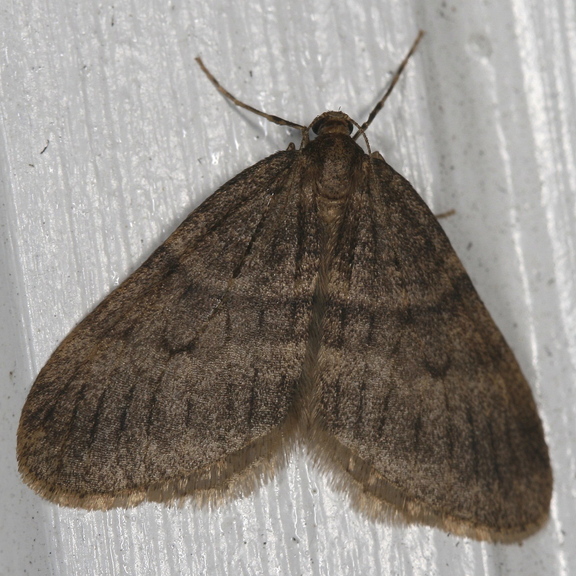Winter moths are back – and flying around in more places in Maine than before.
The small, light brown to tan moths, which can be seen almost anywhere along the coast from Kittery to Bar Harbor from now until early January, have been evident along the state’s southern coast for a few years. Maine Forest Service entomologists now suspect they are spreading slowly but surely northward and inland. They are asking residents to use an online survey to report sightings of the pest, which defoliated thousands of acres in Maine earlier this year.
Believed to be transported on nursery stock or in the soil carried with it, the moths in the last decade have spread through much of coastal New England and are especially numerous in Massachusetts.
“People have brought them here (and) people are moving them around; ” said Charlene Donahue, lead entomologist on the winter moth project with the forest service.
While the moths are visible in early winter – hence, their name – their damage is done in the spring, when the eggs laid on the trunks of trees hatch. The larvae crawl up and burrow into both leaf and flower buds and feed on expanding buds and foliage on many trees and bushes, including oak, maple, apple, elm, ash, crabapple, cherry and blueberry, Donahue said. They spread by producing “silk,” which they use like hot air balloons or parachutes to transport themselves to new locations.
After feeding on buds, the caterpillars drop to the ground and pupate below the surface. They emerge as moths in November and December, often after a period of above-freezing temperatures. Only the males can fly any distance; females are virtually wingless.
Nearly 5,200 acres in Maine were defoliated this past spring by winter moths, the forest service says. Damage was moderate to heavy in scattered locations from Cape Elizabeth, Peaks Island and Harpswell in Cumberland County, Bristol in Lincoln County and Vinalhaven in Knox County. Lighter defoliation was found in many more near-coastal areas from York to Knox counties. Some moths were confirmed in Hancock County, but no tree injury was found there this year, Donahue said.
The forest service is monitoring the distribution and spread of the moth in two swaths of the state – a coastal area from Kittery to Bar Harbor and another zone farther inland, from near Gray to Berwick, Donahue said.
No specific estimate on the dollar value of devastated trees is available because much of the damage has occurred along the ocean in wooded areas that are not commercially harvested.
“It’s hard to estimate because it’s not just timber commodity value,” said Dave Struble, Maine state entomologist. “Where we’re dealing with winter moth now is in the high-rent district. This is high-value coastal property. On average, coastal property is worth a lot more. We know it’s not insignificant.”
Winter moths have had a limited impact on Maine agriculture so far, although in Massachusetts they have stripped parts of apple orchards and blueberry fields.
To help analyze how the moth could affect the state as a whole, the U.S. Forest Service is monitoring long-term impact and spread on 30 small, random plots in Harpswell that are representative of all types of forests, Donahue said.
Separate research there has revealed that the moths prefer apples and oaks, said Kaitlyn O’Donnell, a graduate student in entomology at the University of Maine who has been working in Harpswell for the last 18 months.
So far, the Harpswell sites she has been tracking seem to suggest that the moths are not spreading very far or fast. However, they have stripped oaks almost completely, and their choice of apple trees as a favorite host might well raise concern eventually among commercial growers, if the insects extend their range, O’Donnell said.
Parasitic flies, which feed only on winter moths, have been released in Harpswell and Cape Elizabeth to try to start bringing the moth population under control, Donahue said. These flies, Cyzenis albicans, already have been used successfully in Nova Scotia, British Columbia, Oregon and Washington state, she said.
It will take some time, however, for the flies to make a dent in Maine’s winter moth population.
“There are millions of moths out there,” she said. The releases of 1,500 parasitic flies in the two coastal locations will take many seasons to show results. “They’re not going to have an impact on winter moth populations for years – think eight to 10,” Donahue said.
Maine residents who observe the moths flying or clustered around lights during the months of December and January can report the sightings using the forest service online survey at http://1.usa.gov/18vlirf.
North Cairn can be contacted at 791-6325 or at:
ncairn@pressherald.com
Send questions/comments to the editors.



Comments are no longer available on this story